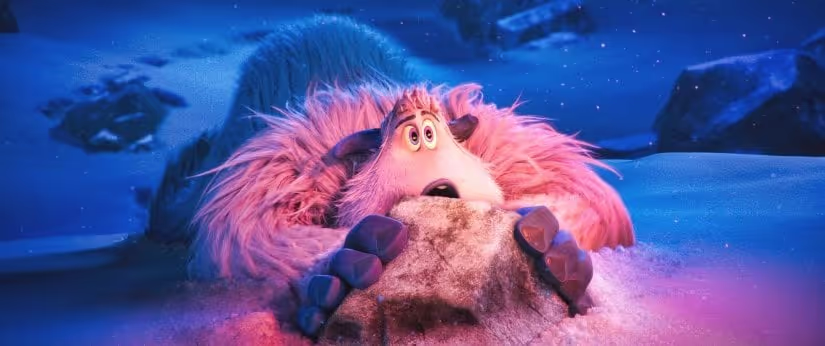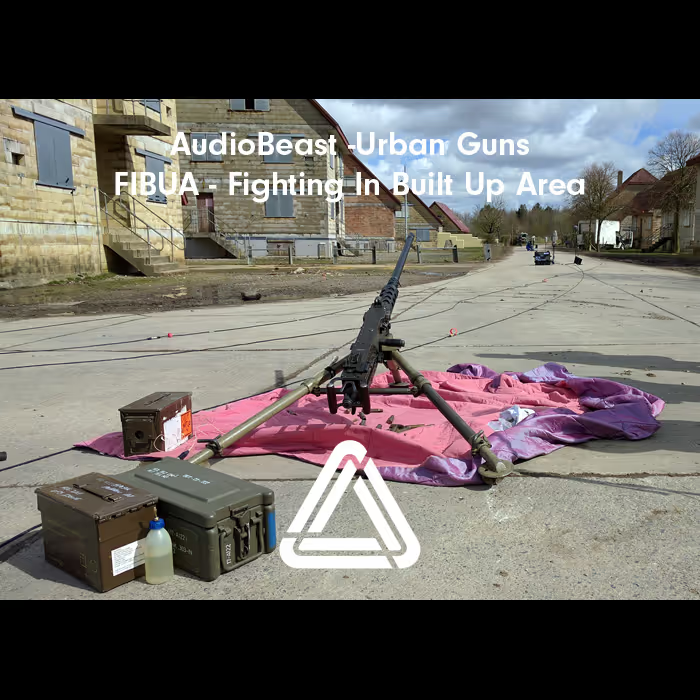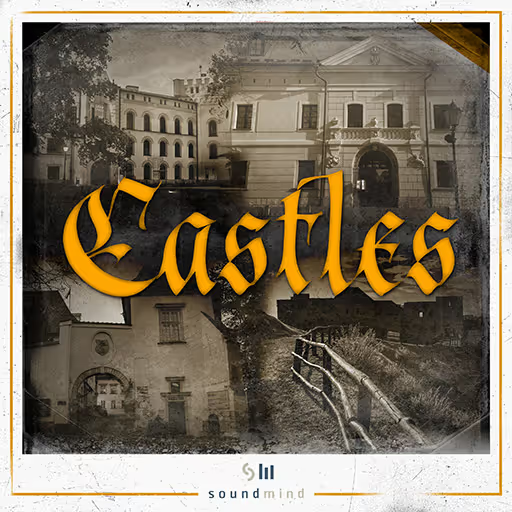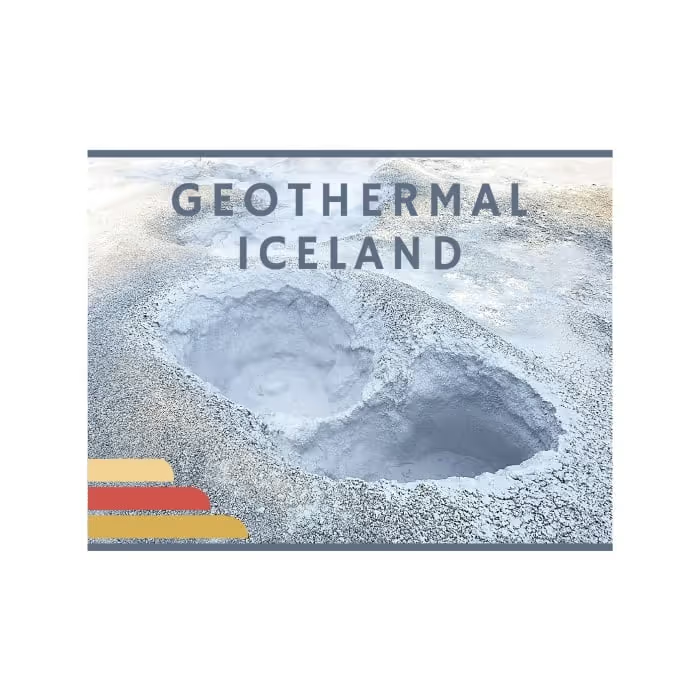In this exclusive A Sound Effect interview, Smallfoot supervising sound editor/sound designer/re-recording mixer Michael Babcock talks about his approach to creating an exciting, kid-friendly soundtrack that was a cohesive blend of music and effects. He also shares details on recording lots of rocks, designing those Yeti vocals, building the sound of a massive stone-based Rube Goldberg device + lots more:
Picture this — a group of curious explorers ventures into unfriendly territory. The inhabitants, armed with rifles, use snowmobiles and a helicopter to pursue the explorers as they try to escape back toward safety. A helicopter is struck down and crashes into a tree. One explorer is shot in the chest, and falls to the ground. How would you create the sound for that sequence? Now, how would you create the sound for that sequence for a kid’s film?
That was one of the challenges faced by Warner Bros. Sound’s supervising sound editor/sound designer/re-recording mixer Michael Babcock on Warner Bros. Pictures’ animated film Smallfoot — in theaters now.
Smallfoot tells the tale of a secluded Yeti community that honors tradition and frowns upon curiosity. One day, a young Yeti named Migo (Channing Tatum) discovers a ‘smallfoot’ (a human), whose plane crashes not far from the Yeti’s mountain-top town. It’s a discovery that changes the world of the Yeti and the humans forever.
Babcock had to devise a way to make the action scenes feel more fun than tense, while not going full-on cartoony. He also had to enhance the contrast between the huge-but-friendly Yeti and the small-yet-menacing humans (menacing but still not scary!). Another challenge was to design a ‘Yeti speak’ voice (how the humans hear the Yeti) that was big, and bold, and animalistic but still had the characteristics of language. Babcock was also in charge of mixing the effects alongside re-recording mixer David E. Fluhr (dialogue/music) on Warner Bros. Stage 5. They mixed the film in 7.1 surround via Avid S6 consoles.
Here, Babcock talks about his approach to creating an exciting, kid-friendly soundtrack that was a cohesive blend of music and effects. He shares details on recording rocks, designing Yeti vocals, and building the sound of the massive stone-based Rube Goldberg device that occupies all levels of the Yeti town.
Where did you start on the sound of Smallfoot?
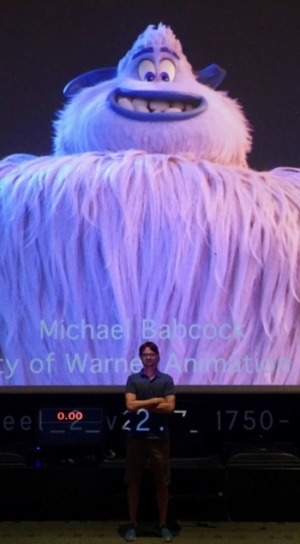 Michael Babcock (MB): I started working on the ‘Yeti speak,’ which is how the humans hear the Yeti. I started by developing their language. We had many discussions about what that was and the approach evolved over time. The director Karey Kirkpatrick wanted it to sound like a “Klingon language for animals.” That was one of the first things we talked about.
Michael Babcock (MB): I started working on the ‘Yeti speak,’ which is how the humans hear the Yeti. I started by developing their language. We had many discussions about what that was and the approach evolved over time. The director Karey Kirkpatrick wanted it to sound like a “Klingon language for animals.” That was one of the first things we talked about.
The first attempt was to record an actor performing the parts. We used actor Fred Tatasciore, who is really good (scary good!) at making animal noises. We recorded him at 192k with a pair of microphones, one of them being able to capture frequencies up to 100 kHz. We had Fred act out scenes as an animal — a bear/seal kind of hybrid.
Because of the way the picture is cut, you have the Yeti (Migo, voiced by Channing Tatum) speaking the line and then it cuts to the human’s perspective and you hear the ‘Yeti speak.’ You have to have a continuation of that line. It has to have the same cadence and inflection. I thought the easiest way to do that was to hire a great voice actor who can do animal voices and then sweeten that actor’s performance with animal sound while also pitching it down. That ended up not working to some degree. But, we were able to use pieces of it later for other layers.
Reformer came up with some interesting results. It came up with the cadence I needed, and it sounded really cool too.
What I ended up doing was using many different combinations of techniques to do animal design. Starting with this relatively new program called Reformer by Krotos, Ltd. (Reformer works by creating a profile of an input sound’s amplitude and pitch information, and then applies that to a user-selected library sound, such as a Black Leopard or Bengal Tiger or a even a Crate on Concrete), I used Channing Tatum’s read of the line that was supposed to be in ‘Yeti speak’ as my input sound that was triggering the other sounds. As the plug-in is being engaged, you can automate between which sounds are being triggered to randomize the effect. You can morph between the sounds being triggered by the input sound. The sounds I selected to be triggered were mostly seals, bears, and tigers. Reformer came up with some interesting results. It came up with the cadence I needed, and it sounded really cool too. It sounded like something I hadn’t heard before, as far as animal design goes, because you’re making a language from animal sounds.
Then, to really hone it in, there was this laborious process of taking those sounds and editing them into syllables and adding sounds on top to make it sound like there was more inflection. But, still, it had to sound like fluid speech.
There were about 14 lines in the whole film that were in ‘Yeti speak’ but those took a lot of time. That was issue number one for the Yeti. It was a lot of fun and I’m happy with how it turned out because it sounds like them. It felt like the gag, that the Yeti is huge and scary, and the human is small. Yet, to the audience, there’s still a connective string of personality.
How about that moment when you have the Yeti speaking with the bear? You see that from the human perspective…
MB: The bear was done by Jeff Sawyer, one of my effects editors. He was able to find the right bear sounds and manipulate those a bit so that it made a performance. But we were lucky to have bear recordings that made it seem like they were having a conversation and that they both had personalities.
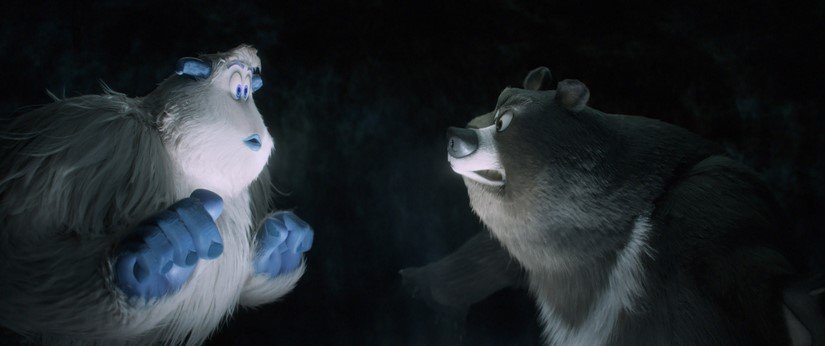
Then there’s the other direction, how the Yeti hear the humans. How did you create that sound?
MB: That was the picture editor, Peter Ettinger. He invented a little language himself for the humans. He would write down lines that were kind of close to English, read that really fast and record it, and then pitch it up and edit it. So all the human speak that the Yeti hear was created by Peter. It’s similar to the Minion speak for Despicable Me. You have this person saying something that you kind of understand, or at least understand what they’re getting at.
The Yeti, though, were a lot harder to come up with. Getting the cadence of the sentences to sound like something that could be English but using a bunch of animal sounds was a real challenge and I’m particularly proud of the result.
The Yeti are way bigger than the humans and the audience gets that scale during the plane crash sequence. That’s supposed to be a big plane coming out of the sky, but then the sound is from the Yeti’s perspective, so it doesn’t sound as massive. How did you get that perspective to work, where the Yeti doesn’t sound fearsomely huge (too scary for kids) and the plane sounds appropriately large (not like a toy)?
MB: For that particular sequence, there was a lot of debate amongst the filmmakers of how to play it, mainly for the kid factor. The scene was actually built like a Michael Bay movie, with gigantic things hitting gigantic things, with big waves of snow as the propeller hits the mountain. Those sounds are all underneath the scene but mix-wise, we played up the music. That drove the scene and then we focused on very specific events to hit with sound effects. I hate to say that we ‘cartooned it up,’ but to some degree we tried to make the sound lighter without making it sound too much like a cartoon.
I did actually do a whole recording of pots and pans, which is certainly a cartoon-type sound effect. But because they were new recordings, they didn’t seem so old school cartoony.
Migo is banging around on top of the plane, and at one point he’s sliding down the mountain inside of it, so I did actually do a whole recording of pots and pans, which is certainly a cartoon-type sound effect. But because they were new recordings, they didn’t seem so old school cartoony. At the same time, though, that’s really what the sequence is, that slapstick comedy. I just didn’t want to go all the way cartoon.
If you notice, at the end of that plane crash sequence, it does get very deep and heavy because Migo is right next to the plane. The audience knows what a plane is, but Migo doesn’t, and so we play it from the Yeti’s perspective.
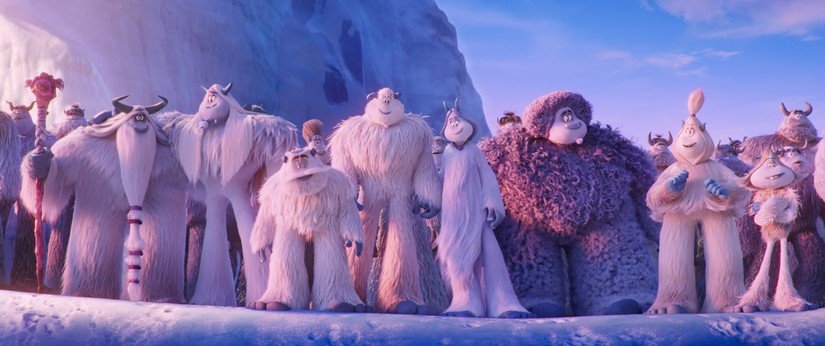
The Yeti town is built around this Rube Goldberg device for making steam. How did you create the sound for this elaborate, town-wide machine?
MB: That is probably my favorite thing I did on the whole film. I’m a musician and there are lots of songs in this film. The song that the Stonekeeper raps (voiced by Common) called “Let it Lie,” which is over the sequence that takes us down into the mountain, into the heart of the machine, that required a lot of interaction between music and effects.
From the beginning, I had a lot of interaction with the music department. They were composer, Heitor Pereira, and the songwriters, Wayne Kirkpatrick and director/writer Karey Kirkpatrick, along with music editor Slamm Andrews. I shared my sound effects with them, like the rock hits, which they used in the score. They were also giving me temp score and tempo maps so I could ‘compose’ the machine and other sound effects to the music in certain sequences.
For the machine, I created rock gears (which are repeating rock hits that sound like gears), and there are some bells. I built a bunch of pulley squeak and rope creak sounds. There were also gear sounds and metal hits that didn’t sound too metallic because the Yeti technology is based on rock and ice.
When you’re up above, in the Yeti town, you hear the pulleys and dings, and that is all timed with the music.
For my favorite sequence in the film, that Common rap, I had built out those huge gears and steam hits using train engines and tonal metal hits and pitched down tonal rock hits. I found strange sounds that could also work, like a wiggly car antenna.
What were some of your sources for all those rock and stone sounds?
Chris Diebold … was excited to work on this film because he’s an actual rock climber. He’s one of these crazy people who will go up in the Sierras in the middle of winter and scale an ice face with an ice pick.
MB: The vocabulary of the film is all about rocks and snow. We spent a lot of time recording rock and stone and snow and ice sounds. Most of the rock sounds came from sound effects editor Chris Diebold. He was excited to work on this film because he’s an actual rock climber. He’s one of these crazy people who will go up in the Sierras in the middle of winter and scale an ice face with an ice pick. So he drove up to some spots he knew in the Sierras and came back with a literal car full of rocks. While he was up there he also captured some great recordings of walking around in the snow.
Much of the stones that Chris brought back were slate and granite, of all different sizes, and some had pitches to them. We recorded rock hits with the Sanken CO-100k mics. We pitched those recordings down and got some interesting sounding hits and tones. Those were useful for the gears and also for the big rock crashes, like when Migo is stuck inside the plane fuselage and he’s falling down the mountain. Those are all sounds from Chris’s rocks.
Chris also brought back some tiny rocks and those became the Stonekeeper’s robe. When the Stonekeeper walks around, you hear his robe rattle and clink because it’s made from all these little stone tiles. That was created from our ‘six rock selects,’ these tiny slate rocks that I dangled from pieces of tape and swished together. We recorded those at a high sample rate and then pitched those down so they sound heavier. But because they were small and had distinct pitches, they sounded more interesting than regular rocks. I added a little bit of processing to make them sound heavier, and then we layered them and cut them to his movements. It took a bit of time to get right.
Were you cutting in Pro Tools, or in a more music-friendly program?
MB: My work was mainly in Pro Tools and occasionally in Native Instruments Kontakt, but the composers — the director and his brother Wayne, did a lot of editing in Logic. So all the vocal and group elements that needed to be in time were done in Logic and then those would be shared with me for certain sequences, like the “Let it Lie” sequence.
The sound of the stone staircase opening downward into the mountain, in the beginning of the “Let it Lie” sequence, was really cool. How did you create that sound?
MB: That is actually just one rock sound that I pitched down in half steps, with the very last step being the start of the tune. It starts with this big bang with a metal thump on it. That was one of those rocks that just happened to have a nice resonance to it. That sound actually shows up in the score a few places too, as percussion.
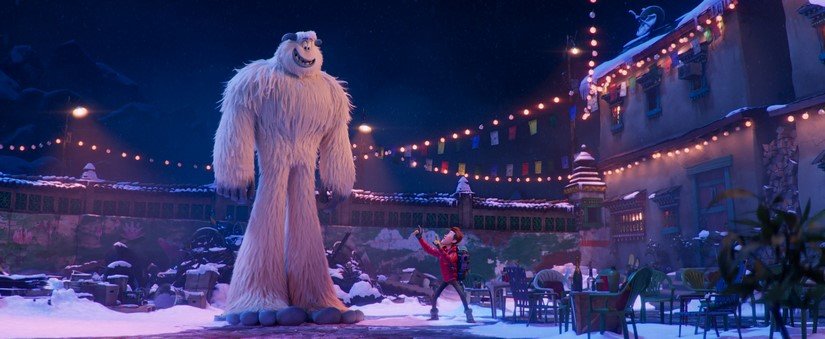
The sound of the little glowing snails in the Yeti world, how did you make those?
MB: That was a combination of sounds. To give it a ‘cute’ sound, we used a squeaky toy, and then to add that electric sound, each one had a little click and a filament sound. I had used some of Richard King’s recordings of light filaments. And, we did some recordings of Edison lights that we put on a variac so they would make some noise while they’re flickering. So it was a combination of all those sounds to make it sound cute and electrical at the same time.
When we go below the clouds into the human world, how far did you want to push the contrast between the Yeti’s rock-and-ice world and the human’s modern-tech world?
Sometimes it was just having the Yeti footsteps sound like barefeet because you have a definitive slap sound. The humans have sneakers or boots. So that contrast was enough to get the point across.
MB: We wanted the human world to seem busy whenever possible, either with group or with the vehicle and city sounds. The whole movie is about contrast, but we had to take a little bit of liberty with the Yeti because you can’t play them big all the time. It came down to the choices we made, like sometimes it was just having the Yeti footsteps sound like barefeet because you have a definitive slap sound. The humans have sneakers or boots. So that contrast was enough to get the point across, without having to kill the subwoofer on the Yeti feet everywhere they go. It was a way to define their difference. Like that cave scene with the bear, if the Yeti is too huge then suddenly it becomes a movie that isn’t so kid-friendly or not as warm. We had to strike a balance of hearing the human Foley and hearing all the Yeti movement.
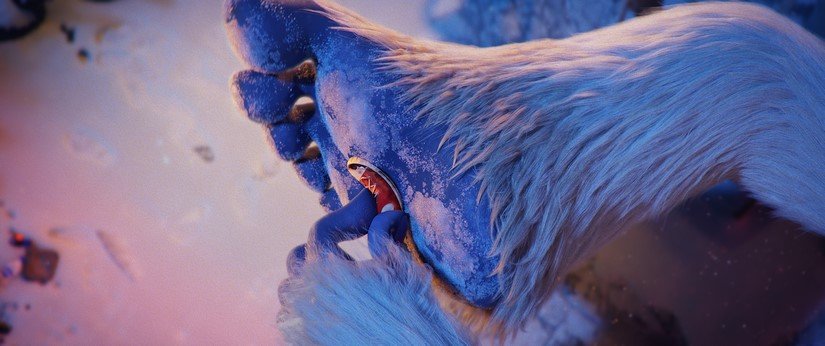
Near the end of the film, the Yeti are trying to escape the humans and return to the safety of their mountain top. It’s the most tense sequence in the film, but it’s a kids’ film. How did you approach the conflict from a sound standpoint so that it felt appropriately tense but not too scary?
MB: We had to make sure we had the right sound at the right moment. That’s a dense sequence because you have music and dialogue and sound effects, and you have to choose for every shot the key details that are telling the story. There are many things in that sequence that you don’t hear. I really went from shot to shot and found the focus for each one.
It was about picking sounds that were ‘fun,’ something that was cool and not scary.
It was about picking sounds that were ‘fun,’ something that was cool and not scary. For example, the gun is a scary sound but since these were dart guns, we wanted to feature the high frequencies of the shot and the sound of the dart traveling instead of a deep attack sound that’s reminiscent of a ballistic weapon. For the dart guns, I used the sound of a silencer, which is less aggressive. It had to sound interesting but also cut through the music. The choices we made were about finding the right sounds, and then finding the right frequencies in those sounds to push.
There’s a helicopter crash in that scene, and it’s not threatening at all. How did you accomplish that?
MB: We didn’t want a sound that was too deep or piercing, so we featured the sound of the blades and the turbines winding down. It sounds more fun.
Pitching is something I often use when working on animation. Everything has to have a different pitch, either a moving pitch or different, musical pitches for successive events. There has to be a cadence to it. That’s even true for a helicopter being shot out of the sky and hitting a tree.
I often use Serato’s Pitch ‘n Time to graphically pitch a sound. Every once in a while when I have to perform something, I’ll throw it over to Kontakt and use the pitch wheel and play it. But I find that Pitch ‘n Time is the most efficient way to go in most cases.
What are you most proud of in terms of sound on Smallfoot?
MB: The Yeti speak and the Common rap sequence with the machine being a blend of score and music. And I’m also proud of our ability to get away with dynamics. For all the music, there were places where the sound effects had to be in time to the music, and be complimentary to the music, and featured without getting in the way of the music. Those are the things that I’m most proud of. That is my wheelhouse, the stuff that I love to do.
A big thanks to Michael Babcock for giving us a look at the exciting yet kid-friendly sound of Smallfoot – and to Jennifer Walden for the interview!
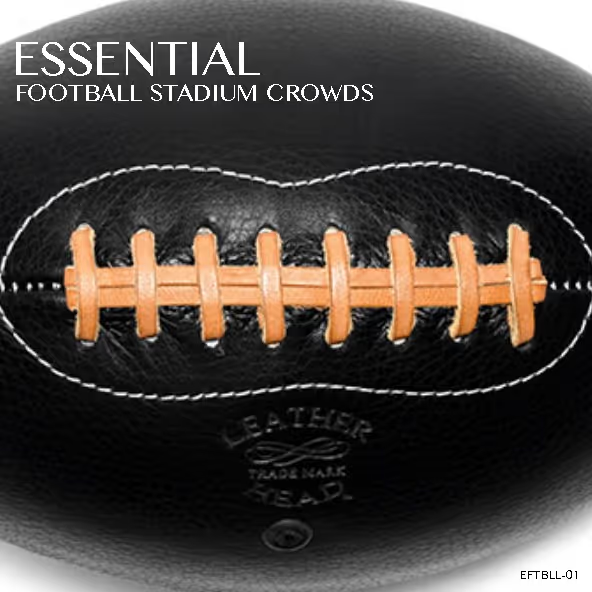 Football Stadium & Crowd Ambiences – Cheers, Goals, Whistles & Field Action for Film, TV & GamesTsunami Sound Wave45,00 $
Football Stadium & Crowd Ambiences – Cheers, Goals, Whistles & Field Action for Film, TV & GamesTsunami Sound Wave45,00 $

